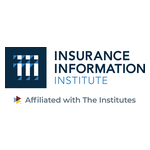NEW YORK–(BUSINESS WIRE)–Cellphone use by individuals operating a motor vehicle continues to be the largest contributor to distracted driving in the U.S., according to the latest Issues Brief from the Insurance Information Institute (Triple-I).
n“As drivers returned to the roads following the pandemic, distracted driving surged, causing higher rates of accidents, injuries, and deaths. This high-risk behavior has worsened in the years since, having huge implications for the insurance industry and their policyholders,” stated Dale Porfilio, chief insurance officer, Triple-I.
nTriple-I’s just-released report, Distracted Driving: State of the Risk, examines the effects of distracted driving and how it is contributing to more hazardous roadways and a higher combined ratio for personal auto insurers. A combined ratio is the percentage of each premium dollar an insurer spends on claims and expenses. It is a benchmark measure which demonstrates profitability in a particular line of insurance.
nThe U.S. personal auto insurance industry saw its combined ratio soar in 2022 to 112.2, meaning for every dollar the industry cumulatively collected in premiums, insurers paid out approximately $1.12 in claims and expenses. The rising cost of replacement parts, inflation, and legal system abuse also contributed to this trend.
nCellphone use–which includes dialing, texting, and browsing–were among the most prevalent and highest-risk behaviors found in governmental and private sector studies, Triple-I’s report explained. A total of 2.5 percent of drivers stopped at intersections were talking on hand-held phones at any moment during the day in 2021, according to a 2022 national observational survey from the National Highway Traffic Safety Administration (NHTSA).
nTelematics and UBI (usage-based insurance) are technologies that can potentially help insurers—and their policyholders—to better understand a driver’s risk profile and tailor auto insurance rates based on individual driving habits.
nAn Insurance Research Council survey in 2022 found 45 percent of drivers said they made significant safety-related changes in how they drove after participating in a telematics program. Another 35 percent said they made small changes in their driving behavior. Policyholders became more comfortable with having their insurer monitor their driving behavior when it resulted in potentially lower insurance costs during the onset of the pandemic.
n“If telematics can influence drivers to change behaviors and reduce the number of accidents, the nation’s roadways will be safer and auto insurance can be more affordable,” Porfilio concluded.
nRELATED LINKS:
| Facts and Statistics: | n | Auto Insurance, Teen Drivers |
| Issues Brief: | n | Personal Auto Insurance Rates (September 2022) |
nAbout the Insurance Information Institute
nWith more than 50 insurance company members — including regional, super-regional, national, and global carriers — the Insurance Information Institute (Triple-I) is the #1 online source for insurance information in the U.S. The organization’s website, blog and social media channels offer a wealth of data-driven research studies, white papers, videos, articles, infographics and other resources solely dedicated to explaining insurance and enhancing knowledge.
nUnlike other sources, Triple-I’s sole focus is creating and disseminating information to empower consumers. It neither lobbies nor sells insurance. Triple-I offers objective, fact-based information about insurance – information that is rooted in economic and actuarial soundness. Triple-I is affiliated with The Institutes Risk and Insurance Knowledge Group.
Contacts
nNew York Press Office: Loretta Worters, 917-208-8842, lorettaw@iii.org


